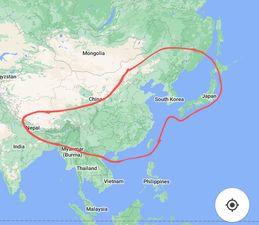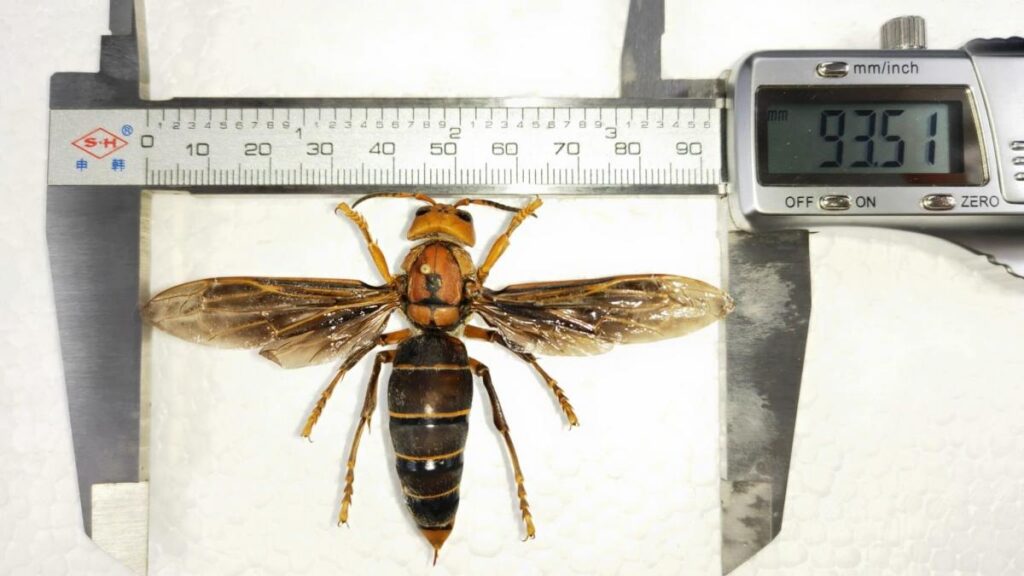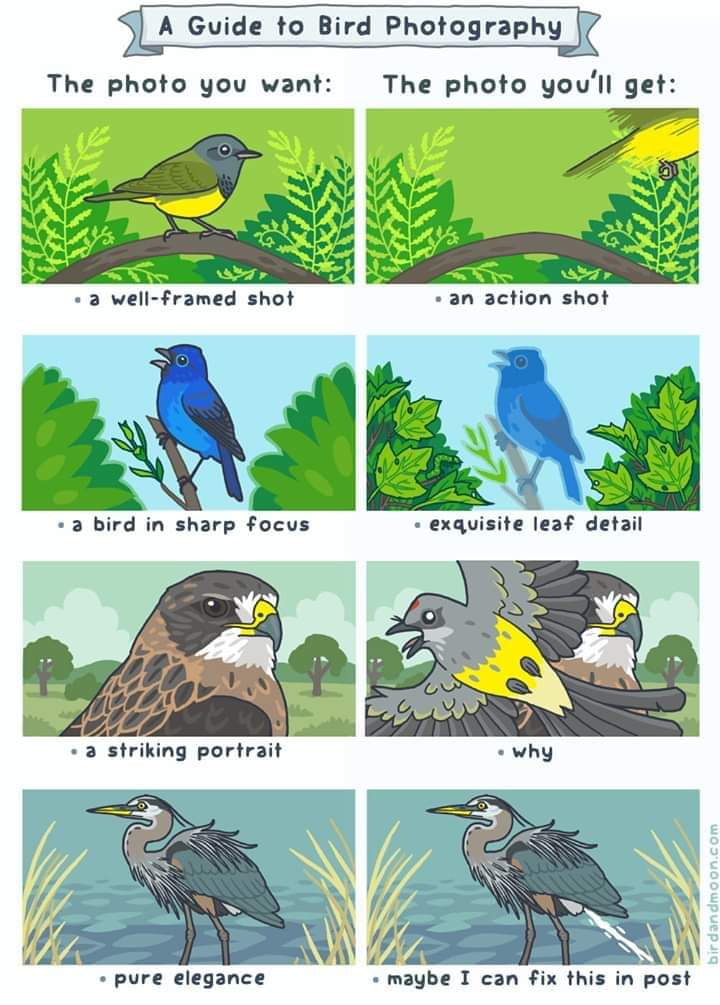
Click the image to open it in Google maps
The Asian Giant Hornet can be found in most Asian countries from China to Japan, South to Vietnam, and to the West to Nepal, and eastern regions of India.

Since August 2019, it has also been found on the pacific coast of North America close to the border between Canada and USA. In the map above you can find all the locations where individual specimens or nest have been found.
Vespa mandarinia, commonly known as Asian Giant Hornet or Japanese Giant Hornet, is the biggest living hornet on the planet. Its size is quite impressive; the body can reach a length of 50 mm, while the wingspan can be over 8 cm.


after Blaine’s nest was removed
How dangerous is Vespa mandarinia?
From 15 to 26 people die every year in Japan for being stung by Hymenoptera (bees, wasps hornets). In China, the yearly figures are between 30 to 40 people.
When compared with the figures form a European country like Italy (which has free access to good quality healthcare) and you notice that 10 to 20 people die even there with a fraction of the China population and roughly half of Japan population you can say than Vespa mandarinia is not more dangerous then Vespa crabro or Vespa orientalis.
Besides a small part of the population who suffers from specific allergies, it takes an average of 60 stung to kill an adult person in good health. Most people stung by 30 giant hornets survive the painful experience.
Here a short video about this insect
For more information please check this link
If liked this article you might want to check what else I published
to help me maintain this website and produce better pictures and contents, click here
Should you be interested in a particular topic, please tell me



